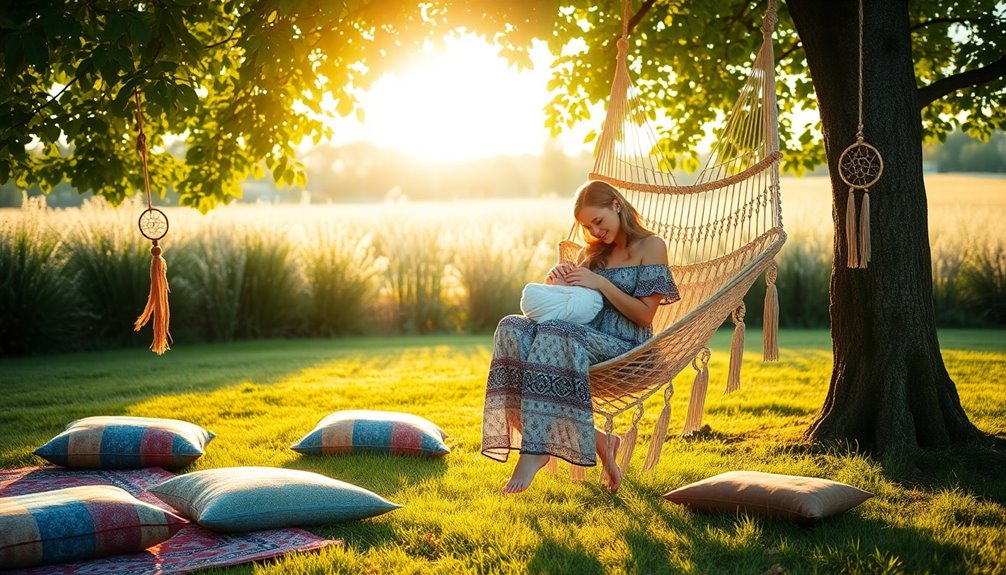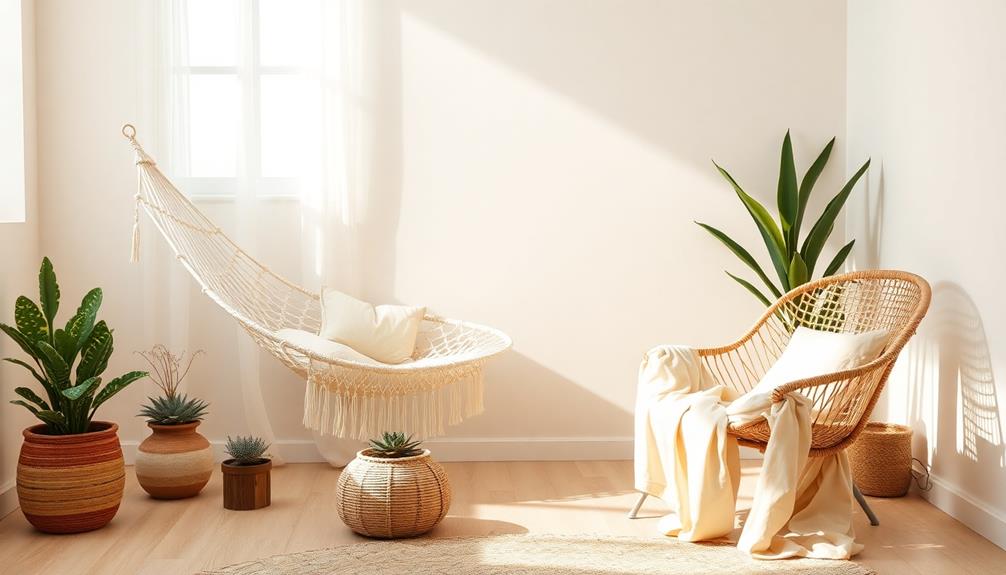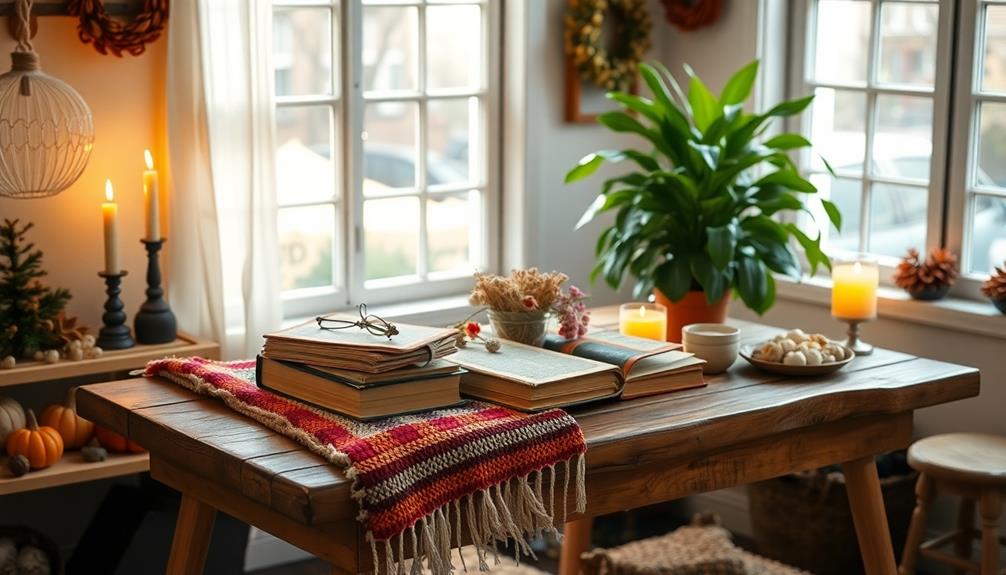To embrace boho parenting for free spirits, create a nurturing space with natural textures like woven baskets, linen cushions, and wooden toys that encourage sensory exploration. Foster emotional safety through calm, respectful interactions and support your child’s interests rather than strict routines. Encourage authentic self-expression by allowing their passions and curiosity to lead, all while cultivating kindness, connection, and creativity. Keep exploring ways to nurture their unique spirit—more ideas await as you continue ahead.
Key Takeaways
- Incorporate natural textures like woven baskets, linen cushions, and jute rugs to create a tactile, grounding environment.
- Foster child-led exploration by following their interests and encouraging autonomy in activities and play.
- Cultivate a calm, nurturing space that emphasizes emotional safety, open communication, and gentle boundaries.
- Support authentic self-expression through personalized creative activities, cultural experiences, and celebrating unique talents.
- Use diverse, inspiring materials like anime movies and nature-based crafts to enrich cultural understanding and creative growth.

If you’re looking for a parenting style that fosters creativity, independence, and emotional well-being, boho parenting offers a relaxed and authentic approach. It’s about creating a nurturing environment where your child feels free to explore, express themselves, and connect with the world around them.
One way to achieve this is by incorporating natural textures into your home. Think of soft, tactile materials like woven baskets, wooden toys, linen cushions, and jute rugs. These elements not only add aesthetic appeal but also provide your child with sensory experiences that encourage curiosity and comfort. Natural textures ground your space in authenticity and remind your child of the beauty in simplicity and nature, fostering a sense of emotional safety that’s essential for their development.
Incorporate natural textures like woven baskets and linen cushions to nurture curiosity and emotional safety in your child’s space.
When children feel safe, they’re more likely to take risks, ask questions, and engage deeply with their environment.
Boho parenting emphasizes emotional safety as a cornerstone of healthy growth. You create this by maintaining a calm, non-judgmental atmosphere where your child’s feelings are acknowledged and respected. Instead of strict discipline, you guide with gentle boundaries and understanding, helping your child build resilience and self-trust.
Encouraging open communication allows your little one to express their emotions freely, which is crucial for their emotional well-being. When children feel emotionally safe, they’re more confident in their abilities and more willing to explore new ideas or try different activities.
This atmosphere of trust and acceptance nurtures their innate sense of self and encourages authenticity—that essential trait that fosters genuine self-expression and kindness.
Child-led learning sits at the heart of boho parenting. Instead of imposing rigid schedules or predetermined lessons, you follow your child’s interests, allowing them to lead their own discovery. This approach cultivates independence and fuels their natural curiosity.
For example, if your child shows an interest in bugs, you might spend time outdoors exploring the garden, observing insects, or reading books about wildlife. You support their passions and give them space to develop at their own pace.
This flexible learning style also promotes critical thinking, problem-solving, and creativity, all rooted in genuine engagement rather than external expectations. By trusting your child to guide their own learning journey, you foster a sense of autonomy and confidence that will serve them well throughout life.
In essence, boho parenting nurtures a child’s inner world by blending natural textures, emotional safety, and child-led learning. It’s about creating a space where your child feels free to grow into their authentic self, supported by a family environment rooted in kindness, connection, and respect for their unique passions and pace. Additionally, exploring diverse anime movies can inspire creativity and broaden your child’s cultural understanding, enriching their emotional development in a playful and engaging way.
Frequently Asked Questions
How Can I Incorporate Eco-Friendly Materials Into My Child’s Daily Routine?
To incorporate eco-friendly materials into your child’s daily routine, start by choosing organic or natural fabrics for their clothes and bedding.
Swap plastic toys for wooden or sustainably sourced options.
Use reusable snack bags and water bottles instead of single-use plastics.
Opt for natural, non-toxic cleaning products, and teach your child to recycle and compost.
Small changes like these help reduce environmental impact while instilling eco-conscious habits early on.
What Are Some Alternative Discipline Methods Suited for Free-Spirited Children?
When it comes to discipline for free-spirited children, you can try gentle approaches that respect their need for independence. Use open conversations to explain boundaries, and offer choices to foster their sense of autonomy.
Instead of punishment, redirect their energy into creative activities or problem-solving tasks. Consistency and patience help them feel secure, while giving them room to express themselves without feeling constrained.
How Do I Balance Creative Freedom With Safety Guidelines?
Your question is a vital balancing act—like walking a tightrope over a canyon of chaos. To do this, set clear safety boundaries that feel like gentle guidelines rather than strict rules.
Encourage creativity within those limits, making safety a part of the fun. Communicate openly with your child, explaining why safety matters, and celebrate their creative ideas.
This way, you nurture their free spirit while keeping them safe and secure.
What Are Beginner-Friendly Boho-Inspired Outdoor Activities for Kids?
You’re looking for beginner-friendly outdoor activities that capture a boho vibe for your kids. Try setting up a nature scavenger hunt where they find colorful leaves, feathers, or stones. Encourage them to create fairy gardens with natural materials or do simple tie-dye projects with fabric.
These activities foster creativity, connection with nature, and a relaxed, free-spirited atmosphere while keeping safety in mind.
How Can I Foster a Sense of Community in Boho Parenting?
You can foster a sense of community by encouraging open communication and shared experiences. Organize casual gatherings like picnics or craft nights where neighbors and friends feel welcome.
Support local events or markets that celebrate creativity and connection. Involve your kids in community service projects, teaching them the value of giving back.
Conclusion
Embrace these boho parenting ideas like a gentle breeze guiding your free spirit through life’s vibrant tapestry. Just as the river flows endlessly, let your nurturing spirit weave love and creativity into every moment. Remember, you’re the artist painting a masterpiece of connection and freedom. Trust your intuition, dance with spontaneity, and watch your child’s unique spirit blossom like wildflowers in the sun. In this journey, your love is the melody that echoes through eternity.










